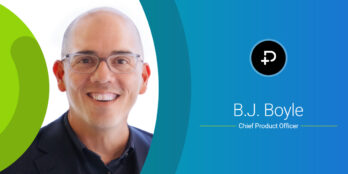
The Cost of Poor Infection Prevention & Control
 3 min
3 min
COVID‐19 has made infection prevention and control top of mind for skilled nursing facilities (SNFs) – but in reality, it has been a long‐standing issue for the industry. In addition to facing a long road ahead with the pandemic, infection prevention and control is something SNFs will continue to confront well beyond the initial waves of the virus.
The financial impact of COVID‐19 is also top of mind for SNF operators, making the idea of cost savings very attractive. It’s more important than ever to consider the true costs of poor infection prevention, both short and long ‐term.
The Rising Cost of Infections in SNFs
The cost of an infection in a facility is tremendous. More importantly, the expense often transcends the monetary value of treating it, including:
Antibiotics – Consider what it costs to treat one infection from an antibiotics perspective. Now imagine treating an infection that has spread. Some drugs are cheap while others are expensive – seldom is there an in‐between. What’s more, as adults age and are exposed to more antibiotics over time, they often develop antibiotic resistance. This can complicate matters further. SNFs don’t get paid more just because treatment costs go up.
PPE – In addition to weighing the price of treating an infection with reimbursement, SNFs face costs associated with personal protective equipment (PPE) to keep their staff and other patients safe. This price has risen by 1000% due to COVID‐19, demonstrating how costly these types of line items can become when infectious diseases spread within a facility. On top of inflated prices, PPE is also traditionally considered a financial burden for SNFs given they are disposable.
Reputation – Reputational cost for a SNF can also be significant. Health systems – let alone families – may be less likely to send their patients or loved ones, respectively, to a facility with a history of infection spread. SNFs want to be known as the preferred option when a patient is ready for transfer. Let’s face it: no one wants to be picked last in gym class.
Outcomes – Poor patient outcomes, such as hospital readmission, can impact a SNF’s otherwise five-star CMS rating. Overall outcomes impact referrals, too. What’s more, surveyors who inspect facilities can slap them with heavy fines, especially if they have prior penalties.
The Bailout
How can SNFs avoid these extensive costs? Simply put: go back to the basics. The majority of infections spread by physical touch. Hand washing, educating staff and establishing your precautions as foundational pillars within the facility all demonstrate steps in the right direction.
SNFs also need to rely on the power of data to guide them. Everyone has an infection prevention process, but that process has historically required human intervention and manual data entry, a time consuming and intensive process. Thankfully, technology can now streamline the monitoring and documentation process, completely automating the entry and analysis of infection data. Infection prevention isn’t a nurse’s primary responsibility. By the time you’re looking at data manually, it can be too late. The infection has spread. Automation tools empower nurses to do their job more efficiently and effectively.
Empower Your Staff With Data
Implementing a clinical workflow and intelligence solution empowers skilled nursing facilities to identify, manage and report infections in real-time. Early adopters of this type of solution are already saving 45‐60 minutes a day by eliminating manual data entry, giving them up to five precious hours back each week to focus on their residents. That’s a whopping 260 hours over the course of a year.
Empowering your staff with automated tools isn’t like adding guac to your order. SNFs simply can’t afford to approach infection prevention and control manually – especially in the age of COVID‐19. The costs are too great. An effective way to mitigate them is by leaning into data.
Learn how your SNF can benefit from collecting and acting on real‐time data as part of its infection prevention and control plan in our next blog, How Infection Prevention & Control Technology is Helping Frontline Workers Slow the Spread of COVID-19.
October 6, 2020






